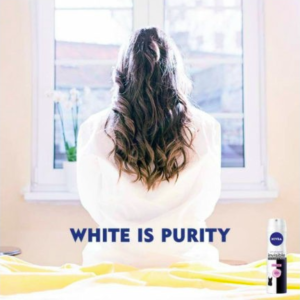That moment of confusion has happened to some of us. A moment where an advertising campaign goes wrong in so many ways when you realize, ‘Wait, you were trying to talk to me. Dear God.’ Whether it was Live for Now (Pepsi) or White Is Purity (Nivea), the big idea of a campaign may seem to have a strong grasp of contemporary issues. But then its narrative has unintentionally placed the campaign’s brand into a negative light among the target audience, let alone into an arena of public outrage and late-night satire.
The good news? Well, people are indeed talking about your brand. Now you’re just praying that the creative team will soon receive PR reinforcements to resolve this digital firestorm. But the damage is done, and it will take more than an apologetic tweet to win over the offended. Before a brand can show itself publicly in its former glory, it now requires the agency, or a new agency, to thoroughly listen to the outrage and use it to their advantage for big idea 2.0–an idea that talks directly to your audience and rebuilds the brand to a stable image.
To some extent, this is where advertising and public relations can work together effectively. For example, the damage can be analyzed by the PR team in order to inform the creative team how to sell their brand in a manner that shows the brand being reflexive of their past actions. Indeed, advertising and public relations face different objectives when communicating to an audience. But building a big idea that incorporates PR tactics will strengthen the brand’s image while meeting the campaign’s objective.
In Vaynerchuk’s (2013) book, Jab, Jab, Jab, Right Hook, his advice in executing social media campaigns expresses a similar rhetoric to Kozinets’ research method of netnography. Both urge their readers to take time in understanding the communicative ‘nuances’ and patterns that foster from their target audience. The only difference is that Kozinets’ method is used during the consumer research phase, whereas Vaynerchuk’s advice is to inform marketers of the basics in creating content that matches the language of their audience.
One cannot really start a movement (i.e., Pepsi) or a still ill-advised notion of purity (i.e., Nivea) without having PR-like support in order to make sure that the campaign’s narrative is both creative and well-suited for its target audience. That way, when a brand reintroduces itself, it will provide some potential for the offended think, ‘Oh, you’re talkin’ to me again? [It’s] nice to see that you’ve made all of the right changes’.
References:
Amatulli, A. (2017, April 5) Nivea Ends ‘White Is Purity’ Campaign After Widespread Backlash. HuffingtonPost. Retrieved from http://www.huffingtonpost.com/entry/nivea-ends-white-is-purity-campaign-after-widespread-backlash_us_58e51876e4b0917d34762692
Kozinets, R. (2016). Netnography. The Blackwell Encyclopedia of Sociology. doi: 10.1002/9781405165518.wbeos0782
Vaynerchuk, G. (2013). Jab, Jab, Jab, Right Hook: How to Tell Your Story in a Noisy Social World. HarperCollins: New York.


2 Responses to You Talkin’ to Me? Wait, Really?